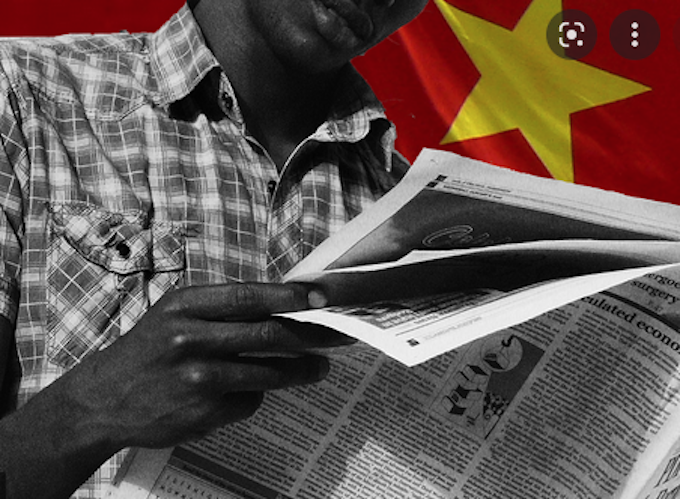
ANALYSIS: The restrictions on Pacific news media during Chinese Foreign Minister Wang Yi’s recent Pacific trip are only the most recent example of a media sector under siege, writes Shailendra Singh.
For the Pacific news media sector, Chinese Foreign Minister Wang Yi’s recent eight-nation South Pacific tour may be over, but it should not be forgotten. The minister and his 20-member “high-level” delegation’s refusal to take local journalists’ questions opened a veritable can of worms that will resonate in Pacific media circles for a while.
However, Wang’s sulky silence should not be seen as an isolated incident but embedded in deeper problems in media freedom and development for the Pacific.
Besides dealing with their own often hostile national governments and manoeuvring through ever-more restrictive legislation, Pacific media is increasingly having to contend with pressure from foreign elements as well.
- READ MORE: Fiji police evict two Chinese defence attaches amid Pacific Forum tensions
- Other reports on China in the Pacific
- Other Pacific Islands Forum reports
China is the most prominent in this regard, as underscored by Wang’s visit, but there have been other incidents of journalist obstruction involving countries like Indonesia as well.
What is particularly appalling is how some Pacific governments seem to have cooperated with foreign delegations to stop their national media from asking legitimate questions.
Fijian journalist Lice Mavono’s account of the extent to which local Fijian officials went to limit journalists’ ability to cover Wang’s visit is highly troubling. In scenes rarely seen before, Wang and Prime Minister Voreqe Bainimarama’s joint press conference was apparently managed by Chinese officials, even though it was on Fijian soil.
When some journalists defied instructions and yelled out their unapproved questions, a Chinese official shouted back at them to stop. One journalist was ordered to leave the room with a minder attempting to escort him out, but fellow journalists intervened.
Journalists obstructed
Similar behaviour was witnessed at the Pacific Islands Forum-hosted meeting between Wang and forum Secretary-General Henry Puna, where Chinese officials continued to obstruct journalists even after forum officials intervened on the journalists’ behalf.
The Chinese officials’ determined efforts indicated that they came well prepared to thwart the media. It also conveyed their disrespect for the premier regional organisation in the Pacific, to the point of defying forum officials’ directives.
However, what should be most concerning for the region as a whole is the way this episode exposed the apparent ability of Chinese officials to influence, dominate, and even give instructions to local officials.
This is all the more disturbing as China is ramping up its engagement with Pacific governments. Consequently, longstanding questions about China’s impact on the region’s democratic and media institutions become even more urgent.
Indeed, just weeks after Wang’s visit, Solomon Islands media reported that Prime Minister Manasseh Sogavare, in an extraordinary gazette, announced that the government would be taking full financial control of the state broadcaster, Solomon Islands Broadcasting Corporation (SIBC).
There are fears that this arrangement — which draw comparisons with the Chinese state-owned broadcaster CCTV — will give the government far more control over SIBC, potentially both editorially and in its day-to-day management.
This is troubling given Sogavare’s antagonism towards the SIBC, who he has accused of giving more airtime to government critics than to officials. Veteran Solomon Islands journalist Dorothy Wickham condemned the move, stating: “We now don’t have a public broadcaster!”
Additional steps
This trend indicates the need for additional steps to strengthen media rights by, among other things, boosting journalist professional capacity. This is simply because good journalists are more aware of and better able to safeguard media rights.
To this end, one area that clearly needs work is a greater focus on reporting regional events effectively. As major powers jostle for influence, and Pacific politics become ever more interconnected, what happens in one country will increasingly affect others.
Journalists need to be aware of this and more strongly frame their stories through a regional lens. However, this will not happen without focused and targeted training.
In this context, media research and development is an oft-overlooked pillar of media freedom. While all kinds of demands are made of Pacific journalists and much is expected of them, there seems to be little regard for their welfare and not much curiosity about what makes them tick.
To get an idea of how far behind the Pacific is in media research, it is worth considering that there has only been one multi-country survey of Pacific journalists’ demography, professional profiles and ethical beliefs in 30 years.
This recent, important research yielded valuable data to better understand the health of Pacific media and the capabilities of Pacific journalists.
For instance, the data indicates that Pacific journalists are more inexperienced and under-qualified than counterparts in the rest of the world. In addition, the Pacific has among the highest rate of journalist attrition due to, among other things, uncompetitive salaries, a feature of small media systems.
Conditions ignored
So, while governments make much of biased journalists, they conveniently ignore the working conditions, training, education, and work experience that are needed to increase integrity and performance.
In other words, the problems in Pacific media are not solely the work of rogue elements in the news media, they are structural in nature. These factors are not helped by draconian legislation which is supposedly intended to ensure fairness, but in fact only further squeezes already restricted journalists.
This situation underscores the need for further research, which can identify and offer informed solutions to the problems in the sector. Yet, scholarships and fellowships for Pacific media research are as rare as hen’s teeth.
Furthermore, Wang’s Pacific visit and China’s activities in the region are a wake-up call for regional media as to the urgent need for capacity-building. Any remedial actions should be informed by research and need to consider problems in a holistic manner.
As we have seen, “band-aid’ solutions at best provide only temporary relief, and at worst misdiagnose the problem.
This China fiasco is also a reminder to care about Pacific journalists, try to understand them and show concern for their welfare. We should not regard journalists as merely blunt instruments of news reporting.
Rather, a free and democratic media is the lifeblood of a free and democratic Pacific.
Dr Shailendra B Singh is the head of journalism at the University of the South Pacific and a research fellow at the Australian National University. This article was first published by ANU’s Asia and the Pacific Policy Society Policy Forum and is republished here with the author’s permission.










































